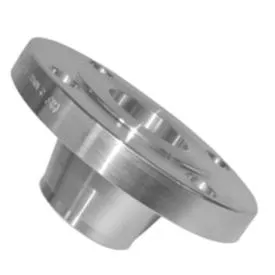-
Cangzhou Yulong Steel Co., Ltd.
-
Phone:
+86 13303177267 -
Email:
admin@ylsteelfittings.com
- English
- Arabic
- Italian
- Spanish
- Portuguese
- German
- kazakh
- Persian
- Greek
- French
- Russian
- Polish
- Thai
- Indonesian
- Vietnamese
- Zulu
- Korean
- Uzbek
- Hindi
- Serbian
- Malay
- Ukrainian
- Gujarati
- Haitian Creole
- hausa
- hawaiian
- Hebrew
- Miao
- Hungarian
- Icelandic
- igbo
- irish
- Japanese
- Javanese
- Kannada
- Khmer
- Rwandese
- Afrikaans
- Albanian
- Amharic
- Armenian
- Azerbaijani
- Basque
- Belarusian
- Bengali
- Bosnian
- Bulgarian
- Catalan
- Cebuano
- China
- China (Taiwan)
- Corsican
- Croatian
- Czech
- Danish
- Esperanto
- Estonian
- Finnish
- Frisian
- Galician
- Georgian
- Kurdish
- Kyrgyz
- Lao
- Latin
- Latvian
- Lithuanian
- Luxembourgish
- Macedonian
- Malgashi
- Malayalam
- Maltese
- Maori
- Marathi
- Mongolian
- Myanmar
- Nepali
- Norwegian
- Norwegian
- Occitan
- Pashto
- Dutch
- Punjabi
- Romanian
- Samoan
- Scottish Gaelic
- Sesotho
- Shona
- Sindhi
- Sinhala
- Slovak
- Slovenian
- Somali
- Sundanese
- Swahili
- Swedish
- Tagalog
- Tajik
- Tamil
- Tatar
- Telugu
- Turkish
- Turkmen
- Urdu
- Uighur
- Welsh
- Bantu
- Yiddish
- Yoruba

Dec . 15, 2024 15:56 Back to list
bending thin wall stainless tubing
Bending Thin Wall Stainless Tubing Techniques, Applications, and Considerations
Thin wall stainless tubing is an essential component in various industries, including aerospace, automotive, and medical. Its lightweight yet robust properties make it highly desirable for applications where weight savings and corrosion resistance are crucial. However, bending these tubes can be a challenging task due to their delicate nature and the specific requirements of achieving accurate geometries. In this article, we will explore the techniques, applications, and critical considerations involved in bending thin wall stainless tubing.
Understanding Thin Wall Stainless Tubing
Thin wall stainless tubing typically refers to tubes with a wall thickness of less than 1.5mm (0.059 inches). The most common stainless steel alloys used for this purpose are 304 and 316, which offer excellent resistance to oxidation and corrosion. Their mechanical properties allow them to withstand various environmental conditions, making them ideal for applications in chemical processing, food and beverage manufacturing, and medical devices.
Bending Techniques
Bending thin wall stainless tubing requires specialized techniques to prevent deformation, buckling, or wrinkling
. The most commonly used methods for bending stainless steel tubing include1. Rotary Draw Bending This technique involves feeding the tubing into a machine that rotates the tube around a mandrel, creating a bend with a fixed radius. A mandrel support helps maintain the interior shape of the tube and prevents collapse during the bending process. Rotary draw bending is widely used for creating precise, consistent bends and is suitable for complex geometries.
2. Compression Bending In this method, the tube is pushed against a bending die while a follower holds it in place. This technique is most effective for tighter bends but requires careful control to avoid collapsing the tube. Compression bending is often used for larger diameters, where aesthetics and structural integrity are paramount.
3. Induction Bending Induction bending uses heat to soften the material at the bend location, allowing for precise bending with minimal distortion. The tube is heated using an induction coil, followed by bending in a controlled manner. This method is particularly advantageous for larger tubes or when minimal wall thinning is required.
4. Freehand Bending This method involves bending the tubing manually using a handheld bender. While it is less precise, freehand bending can be utilized for simple bends or in situations where specialized equipment is unavailable.
bending thin wall stainless tubing

Applications
Thin wall stainless tubing finds extensive applications across various sectors. In the aerospace industry, these tubes are used in fuel lines, hydraulic systems, and structural components. The automotive sector employs them for exhaust systems, fuel lines, and support brackets, where weight savings are crucial for performance and efficiency. Additionally, the medical field uses thin wall stainless tubes for implants, catheters, and other instruments that require strict adherence to safety and sanitary standards.
Considerations for Bending
When bending thin wall stainless tubing, several factors must be taken into account to ensure quality and integrity
1. Bend Radius The bend radius should be selected carefully to avoid over-stressing the material, which can lead to cracks or deformations. Typically, a minimum bend radius of three times the tube diameter is recommended for thin wall tubing.
2. Wall Thickness Thinner walls are more susceptible to crushing and deformation. Therefore, it is essential to ensure the chosen bending technique is compatible with the tube’s thickness.
3. Material Properties Different stainless steel grades have varying mechanical properties. Understanding the specific characteristics of the alloy being used can help in selecting the appropriate bending method.
4. Post-Bending Treatment Depending on the application, post-bending treatments such as heat treatment, surface finishing, or coating may be necessary to enhance corrosion resistance and structural integrity.
Conclusion
Bending thin wall stainless tubing is a complex process that demands precision and careful consideration of various factors. Understanding the techniques and applications of this material is crucial for engineers and manufacturers looking to leverage its benefits in diverse industries. As technology continues to advance, improved bending methods and machinery will further enhance the capabilities and efficiency of working with thin wall stainless tubing, ensuring its place as a vital component in modern engineering solutions.
Latest news
-
ANSI 150P SS304 SO FLANGE
NewsFeb.14,2025
-
ASTM A333GR6 STEEL PIPE
NewsJan.20,2025
-
ANSI B16.5 WELDING NECK FLANGE
NewsJan.15,2026
-
ANSI B16.5 SLIP-ON FLANGE
NewsApr.19,2024
-
SABS 1123 FLANGE
NewsJan.15,2025
-
DIN86044 PLATE FLANGE
NewsApr.19,2024
-
DIN2527 BLIND FLANGE
NewsApr.12,2024
-
JIS B2311 Butt-Welding Fittings LR/SR 45°/90° /180°Seamless/Weld
NewsApr.23,2024











